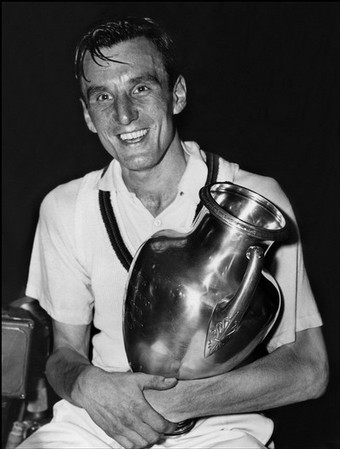Therefore, in relation to the summer project which you will probably see me blogging about more as I begin to start my research and collect images surrounding the brand and the subcultures which fit its specific target consumer, I thought I would put together a little post about the history and context behind the brand and it's identity.
Fred Perry 1952- Present day
Founded in 1952, by the legendary triple Wimbledon champion and tennis player, Frederick John Perry, Fred Perry has since become one of the most iconic and utterly British fashion brands to enter the middle market scene.

The Mods
Obviously the logo is remarkably recognisable to anyone who is interested in sports fashion wear these days. However, although it was founded in the 1950's and devoted entirely to the wardrobe of fellow sports fanatics, Fred Perry gear didn't really take off as fashion wear until the 1960s when it was absorbed by the Mod culture aficionados who put their own twist on the styling of Fred Perry. Mod's in the 60's were known to have worn the iconic Fred Perry white tennis polo t-shirt (which was the only colour the signature polo came in during this time) with a sharp Italian suit to communicate an informal yet slightly dressed up and sophisticated male styling and arguably represent a cultural hybridity of two different style influences from Italy and Britain. This was also obviously a time when multi-culture and cultural diversity were being highly embraced within society due to the beginning of a youth culture, baby boom and new female expectations post war. Therefore, the arrival of the Mod's and their approach to the Fred Perry attire was not seen as negatively as you would think and if anything was welcomed with open arms due to its challenging and experimental exploration of fashion. Due to its popularity among this specific subculture, prior to the 50's the brand started to create their iconic white tennis polo in a range of different colours to meet the demands of the Mod's aka 'The Scooterists'.


The Skinheads
Although arguably the mod subculture was formed from the influence of American soul music, other subcultures who were recognised for wearing Fred Perry during the 1960's and 70's were the Northern Soul scene (which was formed from a passion for American soul music, therefore, there styling was rather similar to Mods) and the Skinheads, who were arguably one of the most out of control, daring subcultures to ever enter British society.
The Skinhead's wore Fred Perry in a very distinctive way to reflect their ruthless attitudes. However, it did not give the brand as greater coverage as hoped because their identification with the label was seen in the eyes of the media and the public as negative due to the idea that everyone who wore a Fred Perry shirt was a fascist or remotely racist in some way.
So as society entered the 70's the tailored formal trousers and loafers worn by the mods were replaced with Levi washed out skinny jeans, heavy cherry red Doc Martins, Fred Perry polos, braces and khaki bomber jackets to convey a militant look which was fuelled by many of the Skinheads nationalist mentality.
Therefore, aware of its skinhead heritage, Fred Perry had to innovatively broaden its appeal. That is why it signed Andy Murray in order to take the brand back to its heavily influenced sporting routes. The brand also had an endorsement with late Amy Winehouse who was asked to model its products and attract a wider audience who associated themselves with soul, jazz and indie music.

Tying sports and the mod look together
Now that I have briefly spoke about three iconic ways the brand was represented throughout the 20th century, I thought I would discuss something it is doing now to resurrect it's mod subculture days and bring the sporting heritage of Fred Perry back to life once again. The brand collaborated with sportsman Bradley Wiggins who is known for his full on Mod haircuts, tattoos, edgy attitude and of course, his cycling career. Therefore, the athlete was the perfect icon for Fred Perry to use as a representative of the brand to reimburse the idea of translating sports wear onto the fashion market whilst also using an individual who shares and understands the importance of the brands cultural roots.


No comments
Post a Comment